 W
WJames J. Andrews was a Kentucky civilian who worked for the Union Army during the early years of the American Civil War. He led a daring raid behind enemy lines on the Western and Atlantic Railroad, known as the Great Locomotive Chase. Andrews and seven fellow raiders were caught at the end of the chase and executed by the Confederates on the charge of spying.
 W
WLafayette Curry Baker was a United States investigator and spy, serving the Union Army, during the American Civil War and under Presidents Abraham Lincoln and Andrew Johnson.
 W
WIsabella Maria Boyd, best known as Belle Boyd, was a Confederate spy in the American Civil War. She operated from her father's hotel in Front Royal, Virginia, and provided valuable information to Confederate General Stonewall Jackson in 1862.
 W
WSpencer Kellogg Brown was born August 17, 1842 in Kansas. He was the son of New York abolitionist Orville Chester Brown (1811-1904), who moved his family to Kansas and took part in the founding of Osawatomie.
 W
WBennet Graham Burley was a Scottish-born pirate, Confederate spy and journalist. Later in life, he changed his surname to Burleigh and became a celebrated war correspondent for the London Daily Telegraph.
 W
WWilliam Hunter Campbell was an Ohio civilian who worked for the Union Army during the early years of the American Civil War. He participated in a daring raid behind enemy lines on the Western and Atlantic Railroad, known famously as the Great Locomotive Chase. The mission failed and Campbell and seven fellow raiders were executed by the Confederates on the charge of spying.
 W
WThomas Nelson Conrad was the third president of Virginia Tech and served in the Confederate Secret Service during the Civil War.
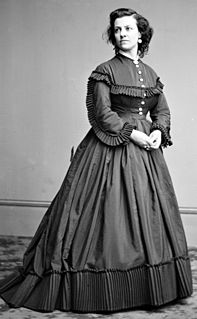 W
WPauline Cushman was an American actress and a spy for the Union Army during the American Civil War. She is considered one of the most successful Civil War spies.
 W
WCynthia Charlotte "Lottie" Moon (1828–1895) was born in Danville, Virginia on August 10, 1828. She and her sister, Virginia "Ginnie" Moon are best known for their role as Confederate spies during the American Civil War. When the girls were young, their father sold their slaves and moved the family north to Oxford, Ohio where they lived in the house that is known as the "Lottie Moon House." As spies for the Confederacy, Lottie and Ginnie smuggled information and medicine from North to South.
 W
WSam Davis was a Confederate soldier executed by Union forces in Pulaski, Tennessee, during the American Civil War. He is popularly known as the Boy Hero of the Confederacy although he was 21 when he died and became a celebrated instance of Confederate memorialisation in the late 1890s and early 1900s eulogised by Middle Tennesseans for his valor and sacrifice.
 W
WDavid Owen Dodd, also known as David O. Dodd, was an Arkansas youth executed for spying in the American Civil War.
 W
WGrenville Mellen Dodge was a Union army officer on the frontier and pioneering figure in military intelligence during the Civil War, who served as Ulysses S. Grant's intelligence chief in the Western Theater. He served in several notable assignments, including command of the XVI Corps during the Atlanta Campaign.
 W
WNancy Hart Douglas was a scout, guide, and spy for the Confederacy during the American Civil War. Serving first with the Moccasin Rangers, a pro-Confederate guerrilla group in present-day West Virginia, she later joined the Confederate Army and continued to serve as a guide and spy under General Stonewall Jackson.
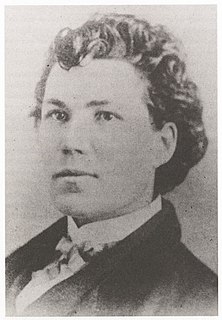 W
WSarah Emma Edmonds was a Canadian-born woman who served as a man with the Union Army during the American Civil War. In 1992, she was inducted into the Michigan Women's Hall of Fame.
 W
WAntonia Ford Willard was a volunteer civilian spy for the Confederate States Army during the American Civil War.
 W
WAbraham H. Galloway was an American escaped slave, abolitionist, mason, spy for the union army, women's suffragist, and Republican state Senator in North Carolina.
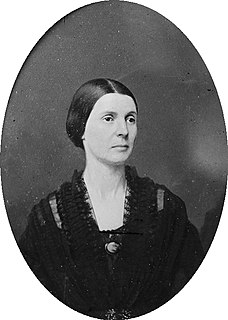 W
WRose O'Neal Greenhow was a renowned Confederate spy during the American Civil War. A socialite in Washington, D.C., during the period before the war, she moved in important political circles and cultivated friendships with presidents, generals, senators, and high-ranking military officers including John C. Calhoun and James Buchanan. She used her connections to pass along key military information to the Confederacy at the start of the war. In early 1861, she was given control of a pro-Southern spy network in Washington, D.C., by her handler, Thomas Jordan, then a captain in the Confederate Army. She was credited by Jefferson Davis, the Confederate president, with ensuring the South's victory at the First Battle of Bull Run in late July 1861.
 W
WHenry Thomas Harrison, often known simply as "Harrison", was a spy for Confederate Lt. Gen. James Longstreet during the American Civil War. He is best known for the information he gave Longstreet and Gen. Robert E. Lee in the Gettysburg Campaign, which resulted in Lee converging on Gettysburg, Pennsylvania, thus causing the Battle of Gettysburg.
 W
WThomas Henry Hines was a Confederate cavalryman who was known for his spying activities during the last two years of the American Civil War. A native of Butler County, Kentucky, he initially worked as a grammar instructor, mainly at the Masonic University of La Grange, Kentucky. During the first year of the war, he served as a field officer, initiating several raids. He was an important assistant to John Hunt Morgan, doing a preparatory raid in advance of Morgan's Raid through the states of Indiana and Ohio, and after being captured with Morgan, organized their escape from the Ohio Penitentiary. He was later involved in espionage and tried to stir up insurrections against the Federal government in selected Northern locales.
 W
WThomas Jordan was a Confederate general and major operative in the network of Confederate spies during the American Civil War. A career soldier in the armies of three nations, he had previously fought in the Mexican–American War, and in 1868 was appointed as chief of staff of the Cuban insurgent army, which fought to achieve independence from Spain. He resigned in 1870 and returned to the United States, where he settled in New York City. Jordan was also a newspaper editor and author, writing articles about the American Civil War.
 W
WHattie Lawton, also known as Hattie H. Lawton, Hattie Lewis, and Hattie Lewis Lawton was an American detective, who worked for Allan Pinkerton, of the Pinkerton Detective Agency. Lawton may have been born around 1837, although most details of her life, before and after the American Civil War, are unknown. "[Hattie] Lawton was part of Pinkerton's Female Detective Bureau, formed in 1860 to 'worm out secrets' by means unavailable to male detectives."
 W
WPryce Lewis was an operative of the Pinkerton Detective Agency and Union spy during the American Civil War. His activities in Charleston, Virginia and the surrounding area heavily assisted the Union Army during the early years of the war. Lewis was later captured and played a part in the trial and execution of fellow agent Timothy Webster.
 W
WWilliam Norris was the Chief Signal Officer of the Confederate States Army and Chief of the Signal Bureau in Richmond. He is often confused with Dr. William S. Morris, president of the wartime Southern Telegraph Company. He is often referred to as Major, but he attained the rank of Colonel in the closing days of the war.
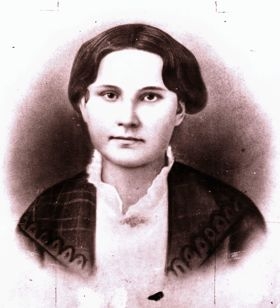 W
WEmeline Jamison Pigott was a Confederate States of America spy from North Carolina, USA. For several years, she hid secret messages in her skirt and carried them between New Bern, North Carolina and the sea ports. She was almost caught several times. Eventually, Union officials arrested her on charges of blockade running, and she was sent back home.
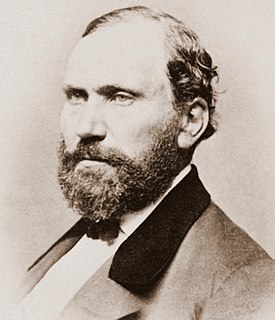 W
WAllan J. Pinkerton was a Scottish–American detective and spy, best known for creating the Pinkerton National Detective Agency.
 W
WWilliam Pittenger was a Union Army soldier during the American Civil War. He was one of the first recipients of the Medal of Honor.
 W
WLaura Ratcliffe was a Confederate States of America spy. Laura's home in Herndon was sometimes used as a headquarters by the Confederate raider, John Singleton Mosby. Mosby gave Laura thousands of Federal Greenbacks to hide in her home. She warned him when Union troops came looking for him, saving his life. Laura Ratcliffe was also a friend of Major General J. E. B. Stuart, who gave her several gifts in "appreciation of her patriotism, admiration of her virtues, and pledge of his lasting esteem.". They had met after Ratcliffe had served as a nurse in a Jeb Stuart's Camp Quivive in Fairfax in the winter of 1861.
 W
WAlbert Deane Richardson was a well-known American journalist, Union spy, and author. Among his works is his noted biography of Ulysses S. Grant. Richardson was shot on two separate occasions, the second time fatally, by a jealous husband of the women Richardson was in love with.
 W
WAnnie Kline Rikert (1840/1841–1906) was a Civil War spy, California mining pioneer and founder of the Women's Railroad.
 W
WGeorge Henry Sharpe was an American lawyer, politician and a Member of the Board of General Appraisers.
 W
WFrank Stringfellow was a Confederate officer and spy who survived the American Civil War, and married the sweetheart for whom he repeatedly risked his life to court – Emma Green. After the war Stringfellow married Green, and became an Episcopal minister.
 W
WHarriet Tubman was an American abolitionist and political activist. Born into slavery, Tubman escaped and subsequently made some 13 missions to rescue approximately 70 enslaved people, including family and friends, using the network of antislavery activists and safe houses known as the Underground Railroad. During the American Civil War, she served as an armed scout and spy for the Union Army. In her later years, Tubman was an activist in the movement for women's suffrage.
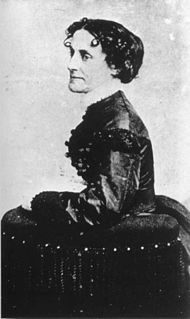 W
WElizabeth Van Lew was an American abolitionist and philanthropist who built and operated an extensive spy ring for the Union Army during the American Civil War.
 W
WLoreta Janeta Velázquez, was a woman who claimed to have masqueraded as a male Confederate soldier during the American Civil War, though her story has been brought into question by recent scholarship. The book she wrote about her experiences claims that after her soldier husband's accidental death, she enlisted in the Confederate States Army in 1861. She then fought at Bull Run, Ball's Bluff, and Fort Donelson, but was discharged when her gender was discovered while in New Orleans. Undeterred, she reenlisted and fought at Shiloh, until unmasked once more. She then became a Confederate spy, working in both male and female guises, and as a double agent also reporting to the U.S. Secret Service. She remarried three more times, being widowed in each instance. According to William C. Davis, she died in January 1923 under the name Loretta J. Beard after many years away from the public eye in a public psychiatric facility, St. Elizabeths Hospital.
 W
WPauline Weaver, born Powell Weaver, was an American mountain man, trapper, military scout, prospector, and explorer who was active in the early Southwestern United States. A number of geographic features in Arizona are named after him.
 W
WTimothy Webster was a British-born American lawman and soldier. He served as a Pinkerton agent and Union spy, and was the first spy in the American Civil War to be executed.
 W
WWilliam Orton Williams, called Orton Williams until he changed his name to Lawrence Williams Orton, was a Confederate officer who, after having been caught behind Union lines in a U.S. Army uniform, was executed as a spy.
 W
WRebecca McPherson Wright Bonsal was an American Quaker teacher who was fired for her Unionist loyalty, as well as delivered important intelligence to the Union Army during the American Civil War, which helped Union Generals Philip Sheridan and George Crook defeat Confederate General Jubal Early in the crucial Third Battle of Winchester in September, 1864.